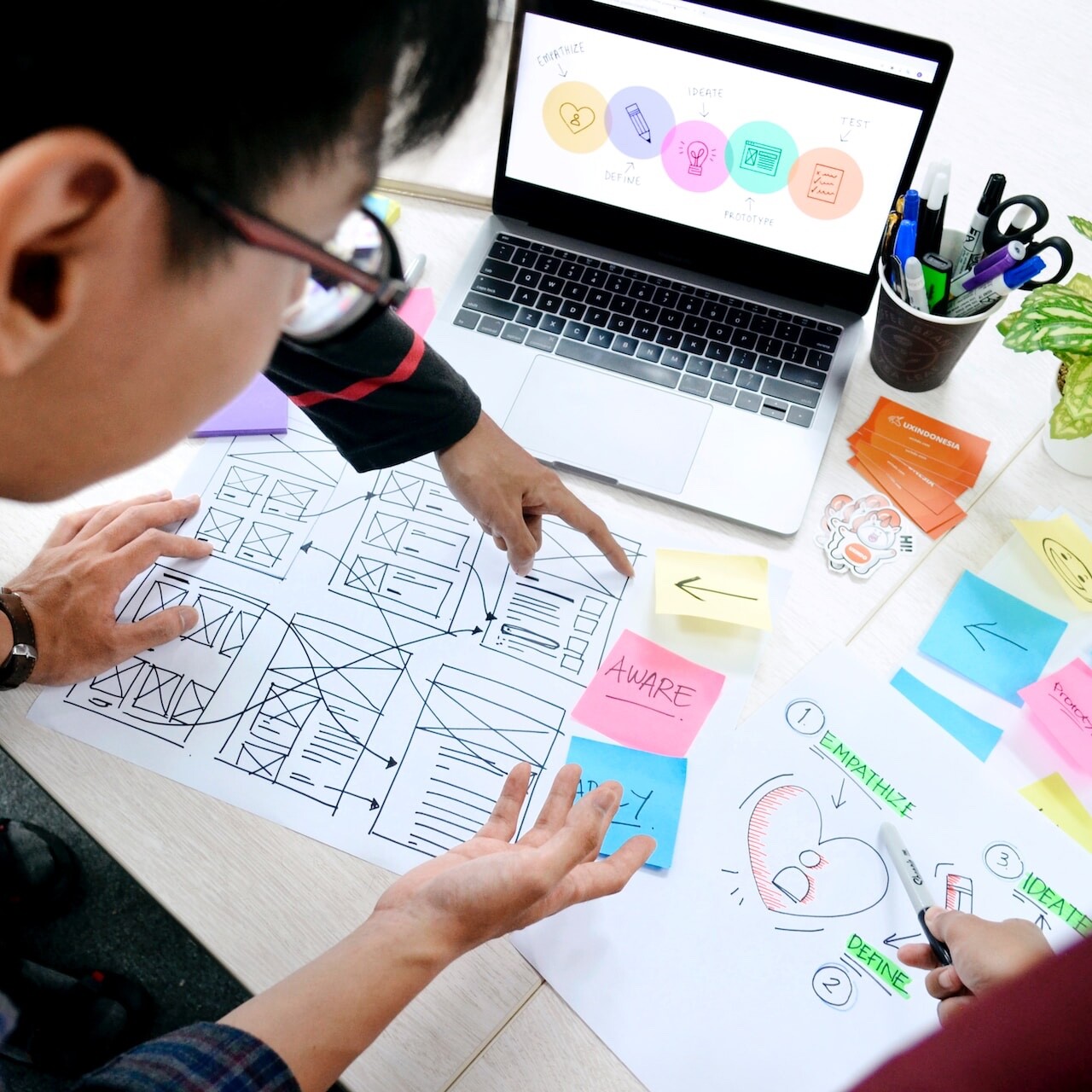- Home
- Experience
- From Basics to Brilliance: User Experience Explained
From Basics to Brilliance: User Experience Explained
This article provides an overview of UX design, its importance, key components, guiding principles, and various techniques used by designers. The conclusion highlights the growing significance of UX design in the digital landscape and its impact on businesses.
Section 1: The Importance of UX Design
Section 2: Key Components of UX Design
Section 3: UX Design Principles
Section 4: UX Design Techniques

Introduction:
User experience (UX) design is a multidisciplinary field that focuses on creating seamless, intuitive, and enjoyable experiences for users. It lies at the intersection of design, technology, and human behavior, encompassing everything from the visual aesthetics to the functionality and usability of a product or service. In this article, we’ll break down the key components of UX design, discuss its importance, and explore the various principles and techniques that guide successful UX design projects.
Section 1:
The Importance of UX Design
Great UX design goes beyond just making things look good – it’s about understanding the needs and expectations of users and ensuring that products and services cater to them. By focusing on user experience, companies can:
- Improve customer satisfaction and retention.
- Increase user engagement and conversion rates.
- Boost brand perception and loyalty.
- Reduce development time and costs by identifying issues early on.
- Foster innovation and adapt to the ever-changing digital landscape.
In the highly complex digital environment, an exceptional user experience (UX) is crucial for standing out and fostering customer loyalty. By prioritizing UX design, brands can enhance customer satisfaction and retention, as it ensures that their products and services are tailored to the unique needs and expectations of users. A seamless, intuitive, and enjoyable user experience not only keeps users engaged but also encourages them to continue using the product or service, ultimately leading to increased retention rates.
Moreover, a well-designed user experience can significantly boost a brand’s perception. When users consistently have positive interactions with a product or service, they are more likely to develop a strong emotional connection to the brand, recommend it to others, and become repeat user. This, in turn, helps companies gain a competitive advantage.
Lastly, investing in UX design from the outset can save companies both time and money in the long run. By identifying potential usability issues early in the development process, designers can address them before they become more complex and costly to fix. Additionally, a focus on UX design fosters a culture of innovation, as it encourages teams to continually iterate and improve upon their products and services to meet the evolving needs of their users. This adaptability is essential for navigating the ever-changing digital landscape and staying ahead of the competition.
Section 2:
Key Components of UX Design
UX design is a holistic process that includes several interrelated components, such as:
- User research: Gathering data and insights on user needs, motivations, and behaviors to inform the design process.
- Information architecture: Organizing and structuring content and features in a way that is easy to navigate and understand.
- Interaction design: Defining how users interact with the product, including user interface elements, animations, and transitions.
- Usability: Ensuring that the product is efficient, effective, and satisfying for users.
- Visual design: Creating a visually appealing and consistent aesthetic that supports the overall user experience.
UX design encompasses a wide range of interconnected components, all working together to create a cohesive and seamless user experience. One of the fundamental aspects of UX design is user research, which involves gathering data and insights on user needs, motivations, and behaviors. This information is crucial for shaping the design process and ensuring that the final product aligns with users’ expectations and preferences.
Another key component is information architecture, which focuses on organizing and structuring content and features in a manner that is easy for users to navigate and understand. This involves creating a clear hierarchy and logical flow of information, allowing users to find what they’re looking for with minimal effort. Well-designed information architecture helps prevent user frustration and contributes to an overall positive user experience.
Interaction design and usability are also essential aspects of UX design. Interaction design involves defining how users interact with a product, including user interface elements, animations, and transitions. It aims to create intuitive and predictable interactions, allowing users to easily accomplish their goals. Usability, on the other hand, focuses on ensuring that the product is efficient, effective, and satisfying for users. This includes making sure that the product is accessible, easy to learn, and free of errors.
Lastly, visual design plays a significant role in UX design. A visually appealing and consistent aesthetic not only catches the user’s eye but also supports the overall user experience. By carefully considering elements such as color, typography, and layout, visual designers can create a harmonious look and feel that enhances usability and leaves a lasting impression on users.
Section 3:
UX Design Principles
Several principles guide UX design, ensuring that the end product is focused on the user’s needs and expectations. Some of these principles include:
- Focus on the user: Understanding and prioritizing the user’s goals, needs, and preferences.
- Clarity and simplicity: Reducing complexity and presenting information in a clear and concise manner.
- Consistency: Maintaining a coherent and predictable experience throughout the product.
- Flexibility: Designing for a diverse range of users, devices, and contexts.
- Feedback and guidance: Providing users with clear and timely feedback on their actions and guiding them through the experience.
- Error prevention and recovery: Minimizing the chances of user errors and offering simple solutions to recover from them.
To create user-centric and successful products, UX designers adhere to several guiding principles that ensure the end product is tailored to the user’s needs and expectations. One such principle is the focus on the user, which involves understanding and prioritizing the goals, needs, and preferences of users to create experiences that resonate with them. By centering the design process around the user, designers can ensure that the product effectively addresses their pain points and requirements.
xClarity and simplicity are also fundamental principles in UX design. By reducing complexity and presenting information in a clear and concise manner, designers can make it easier for users to understand and interact with the product. Eliminating unnecessary elements and streamlining the user interface helps prevent cognitive overload and enhances the overall user experience.
Consistency is another key principle, as it involves maintaining a coherent and predictable experience throughout the product. This includes using consistent terminology, design elements, and interaction patterns. A consistent user experience enables users to feel more comfortable and confident as they navigate the product, ultimately increasing their satisfaction.
Flexibility is crucial in UX design, as it involves designing for a diverse range of users, devices, and contexts. This may include accommodating different user abilities, creating responsive designs for various screen sizes, and ensuring the product functions well in different environments. By being flexible, designers can cater to a broader audience and make the product more accessible and enjoyable for everyone.
Providing feedback and guidance is another essential UX design principle. Users should receive clear and timely feedback on their actions, helping them understand the consequences of their interactions and guiding them through the experience. This may involve using visual cues, sounds, or messages to communicate the results of actions or to signal when further input is required.
Lastly, error prevention and recovery play a significant role in creating a positive user experience. Designers should aim to minimize the chances of user errors by designing intuitive interfaces and providing clear instructions. However, when errors do occur, it’s essential to offer simple solutions to recover from them, allowing users to continue their tasks with undo options.
Section 4:
UX Design Techniques
A wide range of techniques and tools are employed by UX designers to create engaging and effective experiences. Some of these techniques include:
- User personas: Creating fictional characters that represent different user segments to better understand their needs and motivations.
- User journeys and scenarios: Mapping out how users interact with the product over time and in different situations.
- Wireframing and prototyping: Creating low-fidelity representations of the product to test and iterate on design ideas.
- Usability testing: Conducting tests with real users to identify areas of improvement and validate design decisions.
- A/B testing: Comparing two or more design variations to determine which one performs better.
- Heuristic evaluation: Reviewing the product against a set of established usability principles to identify potential issues.
UX designers employ a variety of techniques and tools to craft engaging and effective user experiences. One such technique is the creation of user personas, which are fictional characters representing different user segments. By developing these personas, designers can better understand the needs, motivations, and pain points of their target audience, allowing them to make more informed design decisions.
Another valuable technique is mapping out user journeys and scenarios. This involves visualizing how users interact with the product over time and in different situations, enabling designers to identify potential pain points and opportunities for improvement. By understanding the various touchpoints and interactions users have with the product, designers can create more seamless and enjoyable experiences.
Wireframing and prototyping are essential techniques for UX designers, as they allow for the creation of low-fidelity representations of the product. These representations can be used to test and iterate on design ideas, making it easier to identify and address issues early in the development process. By testing various design approaches, designers can refine their ideas and ensure the final product meets user expectations.
Usability testing is a critical technique used to evaluate the effectiveness of a design. By conducting tests with real users, designers can identify areas of improvement and validate design decisions. Usability testing helps ensure that the product is user-friendly, efficient, and enjoyable to use, ultimately contributing to a positive user experience.
A/B testing is another useful technique for UX designers, as it involves comparing two or more design variations to determine which one performs better. By analyzing user engagement and behavior, designers can make data-driven decisions and optimize the user experience accordingly.
Lastly, heuristic evaluation is a technique that involves reviewing the product against a set of established usability principles to identify potential issues. By conducting a heuristic evaluation, designers can quickly assess the product’s usability and pinpoint areas that may require further refinement. This technique can be particularly helpful during the early stages of design, ensuring that the product adheres to best practices and sets a strong foundation for user experience.

Conclusion:
UX design is an essential component of product development, focusing on creating user-centered experiences that are engaging, intuitive, and satisfying. By understanding the key components, principles, and techniques of UX design, businesses can improve customer satisfaction, increase user engagement, and foster a strong brand image. As we continue to embrace a digitally-driven world, the value of exceptional UX design becomes increasingly vital for businesses seeking to differentiate themselves. By prioritizing user experience and implementing UX design best practices, companies can establish meaningful connections with their audience and pave the way for long-term success.



